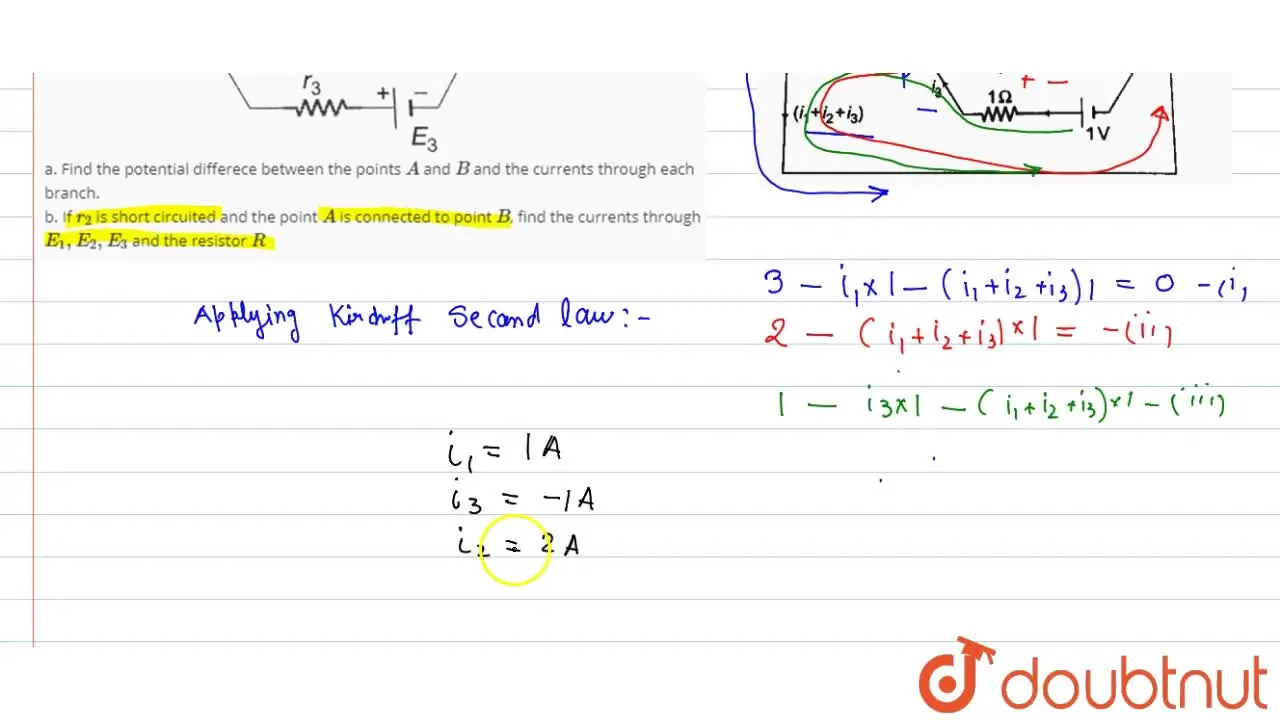In the circuit in figure E1=3V,E2=2V,E3=1V and R=r1−r2−r3=1Ω
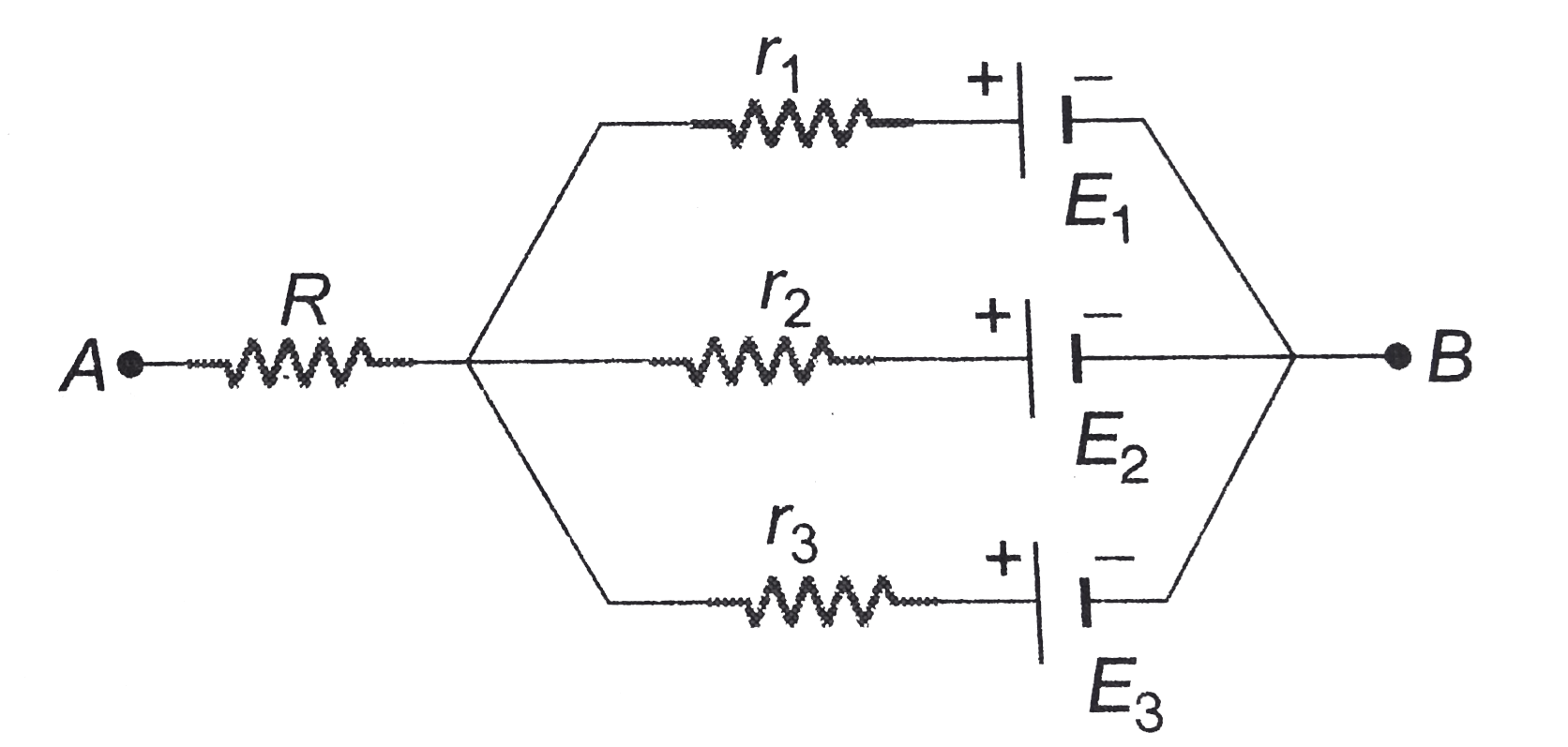
a. Find the potential differece between the points A and B and the currents through each branch.
b. If r2 is short circuited and the point A is connected to point B, find the currents through E1,E2,E3 and the resistor R
a. Equivalent emf of the battries would be
Eeq=Σ(Er)Σ(1r)=(31+21+11)(211+11+11)=2V
Further r1,r2 and r3 each are of 1Ω. Therefore, internal resistance of the equivalent battery will be 13Ω as alll three are in parallel.

The equivalent circuit is therefore shown in the figure.
Since no current is taken from the battery.
VAB=2V (From V=E−ir)
Further VA−VB=E1−i1r1
∴i1=VB−VA+E1r1=−2+3=1A
Similarly, i2=VB−VA+E2r2=−2+21=0
and i3=VB−VA+E3r3=−2+11=−1A
b. r2 is short circuirted means resistance of this branch becomes zero. Making closed circuit with a battery and resistance R. Applying Kirchhoff's second law in three loops so formed.
3−i1−(i1+i2+i30=0 ..............i
2−(i1+i2+i3)=0.............ii
1−i3−(i1+i2+i3)=0.................iii
From equ. ii i1+i2+i3=2A
∴ Substitutig in equ. i we get i1=1A
Substitution in eq. iii we get i3=−1A
∴i2=2A

Related Playlists
- BOOK - DC PANDEYCHAPTER - CURRENT ELECTRICITYEXERCISE - Example Type 12videos
CURRENT ELECTRICITY
- BOOK - DC PANDEYCHAPTER - CURRENT ELECTRICITYEXERCISE - Example Type 21videos
CURRENT ELECTRICITY
- BOOK - DC PANDEYCHAPTER - COMMUNICATION SYSTEMEXERCISE - Subjective11videos
COMMUNICATION SYSTEM
- BOOK - DC PANDEYCHAPTER - ELECTROMAGNETIC INDUCTIONEXERCISE - Medical entrances gallery25videos
ELECTROMAGNETIC INDUCTION
Similar Questions
In the circuit shown in fig E1=3vo<s,E2=2vo<s,E3=1vo<andR=r1=r2=r3=1ohm.
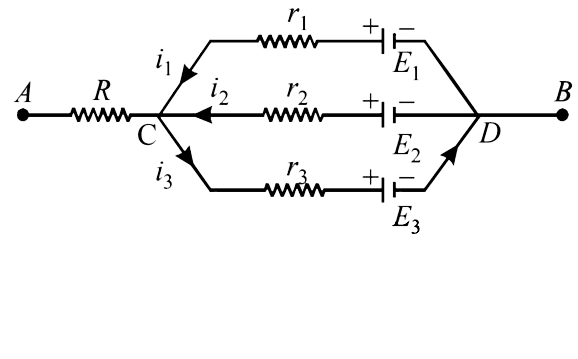
(i) Find the potential difference between the points A and B and the currents through each branch.
(ii) If r2 is short circuited and the point A is connected to point B, find the current through E1,E2,E3 and the resistor R.View SolutionIn the circuit shown in fig. E1=3 volt,E2=2 volt,E3=1 vole and R=r1=r2=r3=1ohm.
(i) Find potential difference in Volt between the points A and B with A & B unconnected.
(ii) If r2 is short circuited and the point A is coneted to point B through a zero resistance wire, find the current through R in ampere.
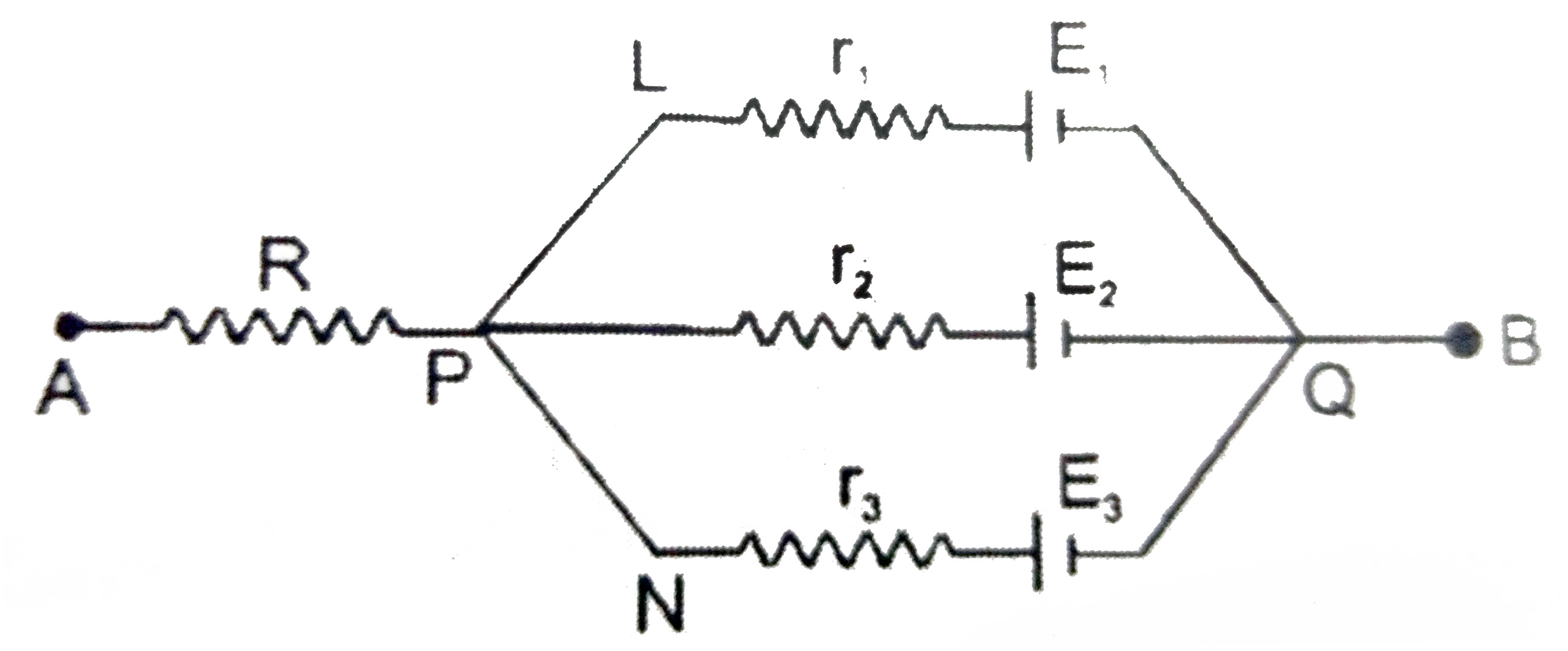 View Solution
View SolutionIn the circuit shown in figure ,(ε)1=3V,(ε)2=2V,(ε)3=1Vandr1=r2=r3=1(Ω).Find the potential difference between the points A and B and the current through each branch.
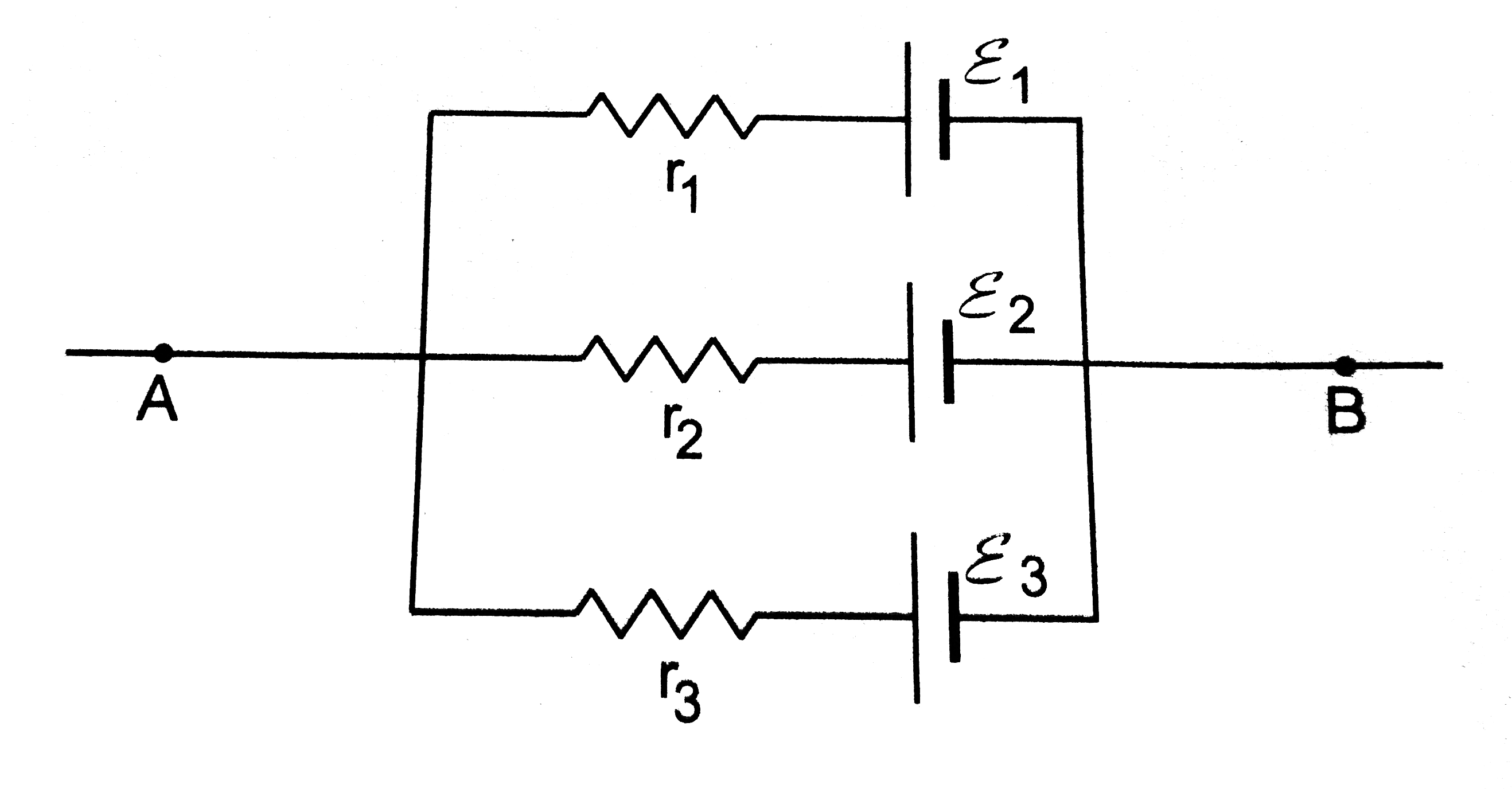 View Solution
View SolutionIn the circuit as shown in figure,
E1=2V,E2=2V,E3=1V,andR=r1=r2=r3Ω.
The potential difference between points A and B will be
 View Solution
View SolutionIn the circuit shown in figure ,(ε)1=3V,(ε)2=2V,(ε)3=1Vandr1=r2=r3=1(Ω).Find the potential difference between the points A and B and the current through each branch.
 View Solution
View SolutionIn the circuit shown in figure

E1=10V,E2=4V,r1=r2=1Ω and R=2Ω.
Find the potential difference across battery 1 and battery 2.View SolutionIn the circuit shown in fig. E1=3 volt,E2=2 volt,E3=1 vole and R=r1=r2=r3=1ohm.
(i) Find potential difference in Volt between the points A and B with A & B unconnected.
(ii) If r2 is short circuited and the point A is coneted to point B through a zero resistance wire, find the current through R in ampere.
 View Solution
View SolutionFor the circuit shown, with R1=1.0Ω,R2=2.0Ω,E1=2VandE2=E3=4V the potential difference between the points ‘a’ and ‘b’ is __________(in V)
 View Solution
View SolutionIn the circuit shown in fig. 5.265, E1=E2=E3=2V and R1=R2=4Ω. The current flowing between points A and B through battery E2 is
 View Solution
View SolutionIn the following circuit E1=E2=E32V and R1=R2=AΩ. The current passing through battery E2 between points A and B is
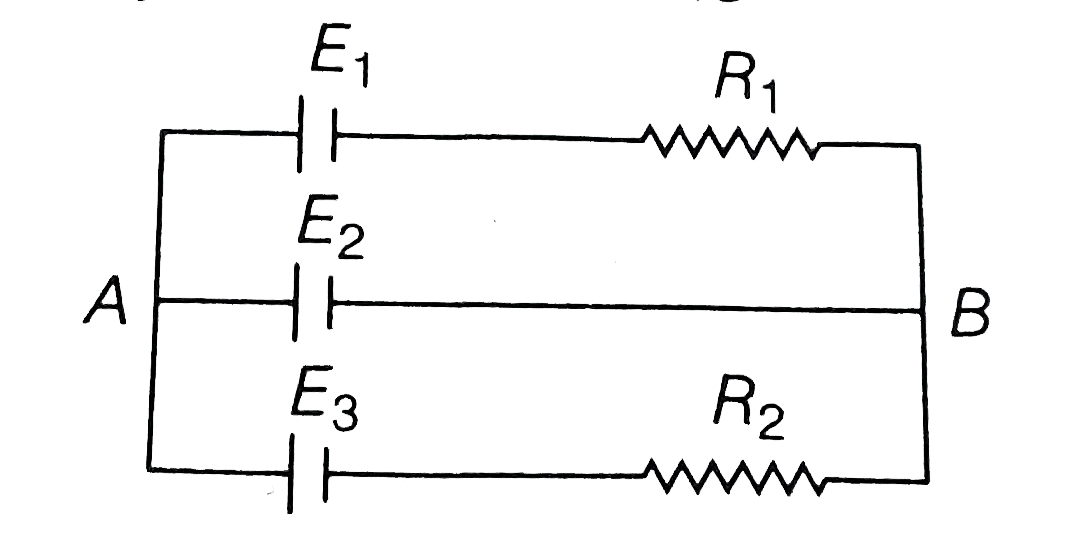 View Solution
View Solution

